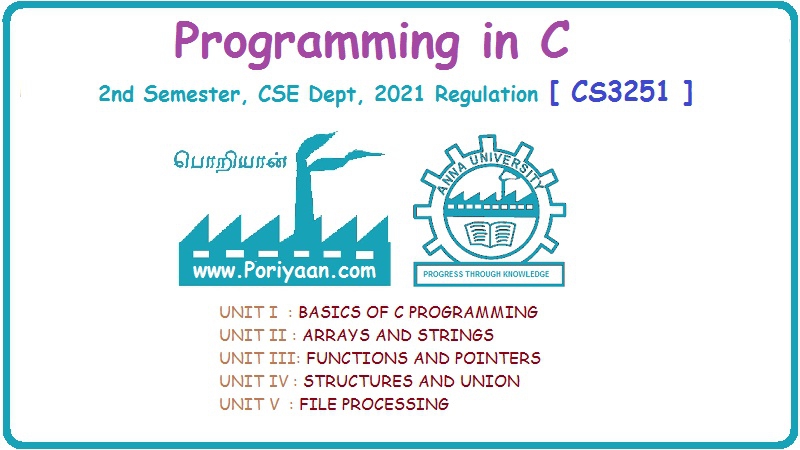Programming in C: Unit I (d): Preprocessor Directives
Introduction of Preprocessor Directives
Programming in C
The preprocessor is a program that processes the source code before it passes through the compiler.
Unit – I :
Basics of C Programming
CHAPTER
4 : PREPROCESSOR DIRECTIVES
Takeaways
•
Preprocessor directives
•
#error directive
•
Pragma directives
•
Predefined macro names
•
Conditional directives
INTRODUCTION OF PREPROCESSOR DIRECTIVES
The
preprocessor is a program that processes the source code before it passes
through the compiler. It operates under the control of preprocessor directive
which is placed in the source program before the main(). Before the source code is passed through the compiler, it
is examined by the preprocessor for any preprocessor directives. In case the
program has some preprocessor directives, appropriate actions are taken
(depending on the directive) and the source program is handed over to the
compiler.
Preprocessor
directives are lines included in the c program that are not program statements
but directives for the preprocessor. The preprocessor directives are always
preceded by a hash sign (#) directive. The preprocessor directive is executed
before the actual compilation of program code begins. Therefore, the
preprocessor expands all the directives and takes the corresponding action
before any code is generated by the program statements.
The
preprocessor directives are only one line long because as soon as a newline character is found, the
preprocessor directive is considered to end. No semico- lon (;) can be placed
at the end of a preprocessor direc- tive. However, the preprocessor directives
may contain a comment (which will be simply ignored).
Programming Tip:
Preprocessor
directives must start with a hash () sign.
Note
In
order to extend a preprocessor directive to multiple lines, place a backslash
character (\) as the last character of the line. This means that the line is
continued in the line following it.
Although
the preprocessor directive is usually placed before the main (), practically
speaking, it can appear anywhere in the program code. However, if written in
between, the directive will be applied only in the remainder of the source
file. The advantages of using preprocessor directives in a C program include:
•
Program becomes readable and easy to understand.
•
Program can be easily modified or updated.
•
Program becomes portable as preprocessor directives make it easy to compile the
program in different execution environments.
•
Due to the aforesaid reasons, the program also becomes more efficient to use.
Programming in C: Unit I (d): Preprocessor Directives : Tag: : Programming in C - Introduction of Preprocessor Directives
Related Topics
Related Subjects
Programming in C
CS3251 2nd Semester CSE Dept 2021 | Regulation | 2nd Semester CSE Dept 2021 Regulation
